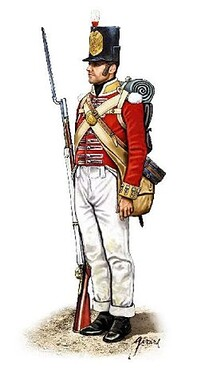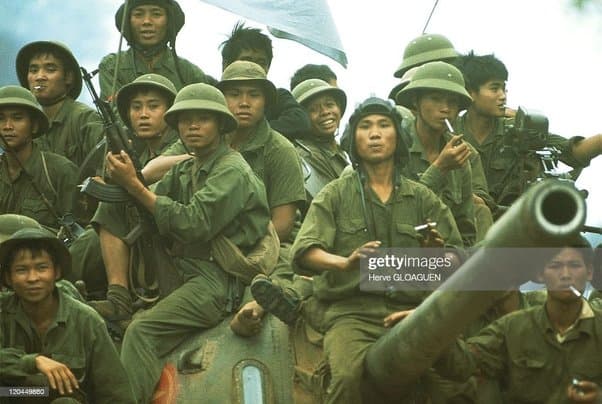Hi devs can we fix that skin for redcoats at final skin at age v?
The bag at side?
One good suggestion is with pay like explorers.if someone like that skin pay and take if no stay with old
Hi devs can we fix that skin for redcoats at final skin at age v?
I agree that the skin for the Imperial Age Redcoat should be changed but disagreed with your choice in model. The final iteration of the Redcoat should NOT be from the American Revolutionary War (late 1770s) but from the end of the Napoleonic Wars (1810s). This can be most simply achieved by changing the colour of the Redcoats’ trousers to dark grey.
Alternatively, the model could be based around a Crimean War (1850s) Era uniform. With black trouser with a red seam down the outside of the leg.
Basically, I think that the model should be at least from the 1800s. I’m also not a fan of the pearly white trouser Redcoats have at the moment (without gaiters!!). It feels a bit weird.
Rant over, let me know what you think ![]()
personally I don’t want the backpacks on their sides. let them put them on the side like the skirmishers of the Dutch
The pants with seams remind me of my adolescence when I played in the school band ![]()
It must be admitted that those seams are very eye-catching, and it could be a good idea for gameplay that seams are an aesthetic element present in the Skins of military units with ‘Imperial Upgrade’ to distinguish them more effectively.
Guard (Napoleonic)

Imperial (Crimean War)

The detail of the epaulettes (is it called that?) is also great.
Amen to that.
That would make a great Imperial Age upgrade to the skin
I did a similar one once, but the models in the game didn’t have the proper shoulder details like today’s redcoat models.
Haha but then can’t you say that all redcoats just look like nutcrackers too ![]()
![]()
![]()
These are definitely the two models I’d like the later upgrades of the Redcoat to be modelled on.
No. At this time, with the development of firearms, Europe had basically given up “line infantry tactics”, which means that in theory they are all units similar to skirmishers, not line infantry.
No, they continued using line tactics into the very start of World War I. In any case, the two-rank line formation was still employed by the British army at this time:
Standing in two rows at the beginning of the battle is not called line infantry tactics. I think you can actually take a look at the war movies of the end of the nineteenth century, with European countries as the main camp, and then take a look at the war movies of Napoleon’s era and the Seven Years War era to see what their battlefields were like. In particular, I recommend the Danish film 1864 And The Battle of Waterloo was filmed by the Soviet Union and other European countries.
And as a more intuitive comparison, I think you can look at the American Civil War movies made by Americans at the same time after watching 1864. Then you’ll have a better idea of what line infantry tactics are.
Even the Zulu War movie is OK, you can search it on YouTube, and you can see that it’s still a series of infantry tactics? If you don’t simply take a picture of the British defeat, you can clearly see how the British dug trenches or built walls, because they needed to hide behind military bunkers to shoot, rather than having to line up to meet the enemy head-on as they did in the plain. The colonial war was a little more conservative, because the weapons of the average European opponent were relatively backward, especially in the European battlefield, where the decline of the line infantry was irreversible from the beginning of the The Prussian-Danish War and Prussian-Austrian War. Even in the colonial war, the British began to change from the traditional closed formation to the open formation in the Boer War, that is to say, they completely abandoned the tactics of the line infantry in form. It’s easy to see this kind of formation because until the twentieth century and even today, in countries like mine, the daily training of the general army would adopt the traditional formation mode. If you still feel that way after doing this, then I think there may be a big difference between our understanding of line infantry tactics and the concept of line infantry. In addition, I think you can also search for a series of infantry tactics in Wikipedia or other platforms, and maybe you can get some inspiration. Also, as I said before, I want to emphasize that I’m talking about Europe, because this is not the case in the Americas, although their weapons are updated very quickly, they do have a longer line infantry tactics than Europe for quite a long time.
In addition, because I am not a native speaker of English, so my English is very poor, even after many times of revision, there may still be a lot of unclear meaning, I hope you can forgive me, thank you.
Yes, it would be a good idea for them to reference nutcrackers in AoE 3 during the holiday seasons and even reference classics such as “The Tin Soldier” ![]()
![]()
I respect your opinion but do not share it for the following reasons:
Soldiers of the French Tonkin Expeditionary Corps in 1885
Spanish officers wearing pith helmets and rayadillo breeches in Spanish protectorate in Morocco, 1912
German uniforms in africa during WW2
Legión Peruana de la Guardia in the War of '41 (probably assigned to Amazonian territory).
Vietnamese soldier wearing a pith helmet

Everybody and their mother had Pith helmets if they were fighting in exotic locales - certainly not inherently British. The 19th century British redcoat (Crimean War) posted is perfectly fine and certainly would make a good imperial upgrade.
On a different tangent, for those wanting the the colonial Pith helmet look, the Colonial treasure Guardian units should totally be available in Imperial Age at Outposts (like African outlaws), for all Euros civs.
It would be fun to see some military units wearing pith helmets on maps with warm climates. I know it’s unnecessarily complicated and not practical to do so, but the idea amuses me.
Black Watch (Crimean war 1853 - 1856)
Black Watch (suppression of the rebellion of Sepoys - 1857)
PS: I took the last photo from this link, because of the type of rifle the soldiers use I have the impression that the photograph was taken in the 20th century; In the same way, there are sources that indicate that British soldiers also used pith helmets during that rebellion.
There is already a similar skin available to the Veteran British Musketeer after you send the Thin Red Line tech, (which is available through the “Glorious Revolution” home city card at the church). They look like this:
The Thin Red Line tech also changes the graphic for the standard British Musketeer too, (as shown below):
Not saying that this should be used as an official skin but it does look pretty cool (even if not really historically accurate).
No, its an age 2 card. The graphics for this model changes once the guard upgrade is competed. This graphic is only for the veteran musketeer.